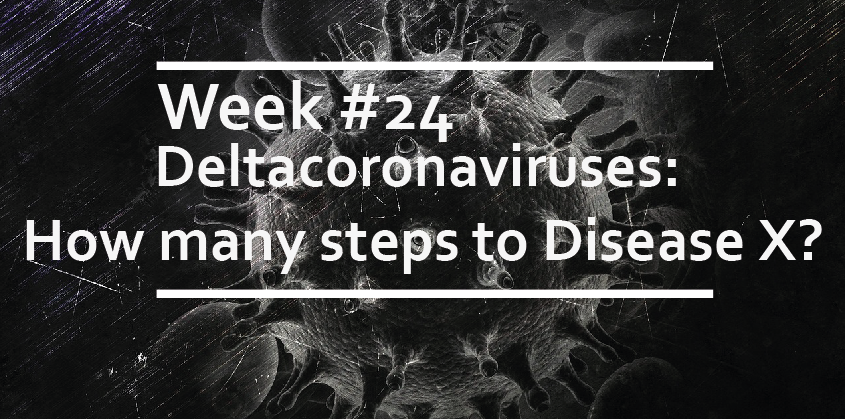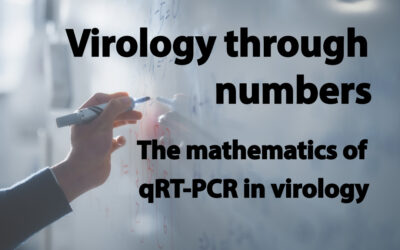Deltacoronaviruses: How many steps to Disease X?
A novel porcine virus can enter human cells
In this week’s paper, we summarize an important discovery regarding the capability of certain viruses to cross species barriers. Working together, scientists based in American and Dutch universities have shown that a novel porcine virus has an alarming multi-host potential and can enter human cells in the laboratory setting. As a consequence of increased globalization, loss of natural habitats, and closer contact between wild and domesticated animals, zoonotic transmission (from animals to humans) of novel viruses represents a significant threat to human health.
Coronaviruses are not fussy about their host
Coronaviruses are positive-sense, single-stranded RNA viruses that infect many mammalian and avian species and cause respiratory, gastrointestinal, and central nervous system diseases. Coronaviruses have a high propensity for interspecies transmission, probably due to their prevalence in mammals and birds, as well as their high mutation rates and high recombination frequencies, which makes them easily adaptable to new hosts. Notable examples of coronaviruses crossing species barriers include the severe acute respiratory syndrome (SARS) outbreak in 2002, which originated in bats, and the Middle East respiratory syndrome coronavirus (MERS-CoV) that has been found in camels and individuals who had close contact with the infected animals.
Could this porcine deltacoronavirus infect humans?
The new coronavirus studied in this paper is a porcine deltacoronavirus (PDCoV), first identified in pigs in China in 2012 and then in several other countries. In pigs, this virus infects the intestinal epithelia and can have potentially fatal consequences. Before it was found in pigs, it had only been found in various birds, with no documented human cases. Concerned about the possibility of a potential jump to humans, scientists at the Ohio State and Utrecht Universities investigated the presumed host-switching event from birds to swine. Coronavirus cross-species infection occurs if the virus can bind to suitable receptors present on the prospective host. Knowledge about the receptor recognition mechanisms of coronaviruses is critical for understanding coronavirus pathogenesis and epidemics, as well as for human intervention in coronavirus infections.
How does this deltacoronavirus enter host cells?
An envelope-anchored spike protein mediates coronavirus entry into host cells by first binding to a receptor on the host cell surface and then fusing the viral and host membranes. The receptor-binding S1 subunit of the coronavirus spike protein contains two distinctive domains, the N-terminal domain, and the C-terminal domain, both of which can function as receptor-binding domains (RBDs). Coronaviruses recognize a variety of host receptors, which have their own physiological functions.
Porcine aminopeptidase is the viral receptor
To determine the host receptor for PDCoV, the authors screened known coronavirus receptors and found that the transmembrane glycoprotein porcine aminopeptidase N (pAPN) is directly bound by the domain B of the S1 subunit of PDCoV. APN plays multifunctional roles in many physiological processes, including peptide metabolism, cell motility, and adhesion, and it is expressed on the cell surface of a broad variety of cells. The APN amino acid sequence is highly conserved across multiple species and, interestingly, is also recognized as a receptor by several other members of the coronavirus genera.
The role of aminopeptidase during viral entry
A different set of experiments was needed to determine the role of pAPN during viral entry. Infection with the PDCoV was drastically reduced in porcine and human cell lines in which APN had been knocked-out. The fact that the infection was not totally abolished warned that, at least in vitro, the virus could use APN-independent entry routes. Also, despite the wide distribution of APN, PDCoV infection appears to be restricted to the swine enteric tract, indicating that factors other than APN distribution play a role in CoV tissue tropism. Conversely, cell lines (e.g., Hela and Vero cells) with no detectable expression of APN and, therefore, that are normally poorly susceptible to PDCoV infection, become permissive following induction of APN expression.
Moreover, expression of porcine, feline, human, and galline APN orthologs in human cells was able to greatly enhance PDCoV infection, indicating that this virus can use an exceptional range of mammalian and avian APN molecules as entry receptors (at least in vitro) by exploiting this receptor’s highly conserved interspecies domain. This is reminiscent of MERS-CoV, which relies on the highly conserved binding site of the DPP4 receptor. This strategy facilitates multiple zoonotic infections without the need for host receptor adaptation, thus providing such viruses with the evolutionary advantage of being able to explore alternative hosts, occasionally resulting in host switching and virus speciation.
How many steps to Disease X?
The initial events of viral host switching are not uncommon. However, before a virus can establish a productive infection in a new species, several additional conditions have to be met, including viral entry, host factor recruitment, and many mechanisms of immune activation evaded. Moreover, even if the single infected cells were to succumb, viral spread to other cells, organs, and individuals is not guaranteed. While these multiple barriers are effective against most of the viruses that we encounter on a daily bases, we must not forget that many viruses, and coronaviruses in particular, have already caught us by surprise on multiple occasions, and that comprehensive vaccine and antiviral strategies are still unavailable. It takes more than one step to become Disease X. The problem is; we don’t know how many steps have already been taken.




